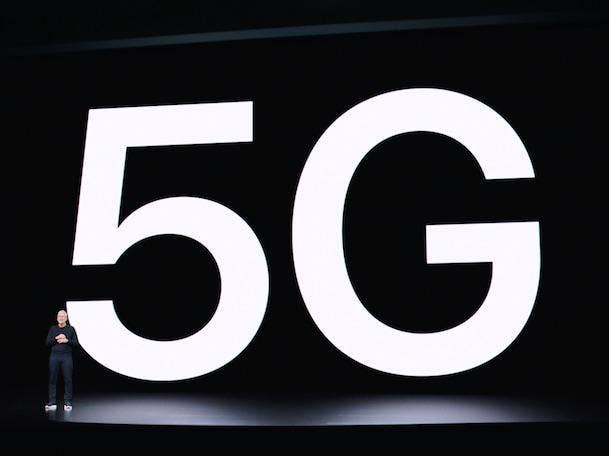OPINION: The 5G iPhones Are Finally Here, Except No One Cares About 5G Right Now
Apple CEO Tim Cook pointed out how 5G lets you avoid connecting to public Wi-Fi. But who has actually used public Wi-Fi lately?

At long last, after years and years of hype, 2020 was supposed to be the year of 5G.
In January, Ignacio Contreras, senior director of 5G marketing at chipmaker Qualcomm, told me that 2020 would undoubtedly be “the year of 5G expansion and going mainstream.”
[Related: Apple’s Four New iPhone 12 Models: What You Need To Know]
Yes, a key part of the 5G equation--mobility--has turned out to be a leading theme of the year. But it’s not in the way anyone thought.
Mobility, in the 2020 definition, is more about having a device you can easily tote from your living room to your bedroom. Because, both rooms are actually serving as your office at different times during the day.
As for our prior idea of mobility—being out on the road, working out of hotels and coffee shops—that is a distant memory for many workers.
And really, that’s the type of mobility that 5G was supposed to be for. Apple CEO Tim Cook brought this up yesterday, in announcing four iPhone 12 models, all of which will support high-speed 5G connectivity.
5G, Cook noted, “helps protect your privacy and security, since you won’t need to connect to unknown, unsecured public Wi-Fi hotspots as often.”
It was actually great to hear Cook give a shoutout to this particular use case for 5G—which I suspect is an even bigger selling point for security-conscious business customers than the faster speeds.
Or at least it would be, in any year besides 2020.
Put another way, avoiding public Wi-Fi may be 5G’s killer app for businesses—except the pandemic has made that application of 5G mostly irrelevant.
Of course, everyone is crossing their fingers that this crisis will subside sooner rather than later. And when it does, 5G’s moment will come.
It just probably won’t be in 2020.